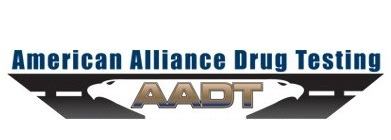What is a Chain of Custody and Control Form?
The term “Chain of Custody” form is commonly referred in acronym usage as a CCF or CoC, and references a document or paper trail showing the seizure, custody, control, transfer, analysis, and disposition of physical and electronic evidence of a human specimen test.
The term “Chain of Custody” form is commonly referred in acronym usage as a CCF or CoC, and references a document or paper trail showing the seizure, custody, control, transfer, analysis, and disposition of physical and electronic evidence of a human specimen test.
For Department of Transportation (DOT) drug testing, it is the course of action of documenting the management and storage of a specimen from the moment a donor provides the specimen (typically urine) for the collector to the final destination of the specimen and the review and reporting of the final test result. It is understandably imperative that the information on the CCF be clear, complete and concise for a result to be reported out quickly and accurately.
Any and all drug testing should incorporate a CCF and process to insure the integrity of the specimen to be tested. This includes both laboratory and instant drug testing. A multi-part CCF form (AADT’s Medtox CCF is 5-parts) and other supplies are used to complete the CCF process.
Typically, for DOT testing there are 5-parts or copies to a federal CCF.
There is a:
Top/Copy 1 – Test Facility
Copy 2 – MRO
Copy 3 – Collector
Copy 4 – Employer, and
Copy 5 – Donor.
The format of the CCF is generally specified and standardized by a governing over-site group made up of government and industry representatives such as labs, SAPAA and DATIA.
The paper work and testing supplies need to support the CCF’s trail through the process and includes packaging type, specimen seals and other relevant information to be included for verification from collection to transport and turnover to the respective laboratory testing facility. Correct process information is added on the CCF as the test specimen travels from person to person during the process.
This provides for specimen integrity and accountability of a test sample. The CCF has been given a status of a legal document and has the ability to be invalidated if the specimen has been tampered with and does not have the complete information written on it. A broken or mismatched seal on the specimen bottle will also invalidate the specimen being tested. Being a legal document, tampering or mishandling the CCF is subject to investigation and subsequent penalization in accordance with the law.
Upon transport, the CCF is again updated as it is received by the testing laboratory. Upon reaching the laboratory, the specifics of the test that will be conducted with the time, date and signature of the person processing the sample are provided in writing. Upon the conclusion of the tests with the results finalized, this CCF is copied or a dedicated part is returned to the Medical Review Officer (MRO) for interpretation and conclusion.
The MRO will record his final result on the completed CCF and may also transport this result electronically using a particular result reporting software. Throughout the process a part or copy of the form may be retained by the specimen collector, the agency requiring testing, the donor, the laboratory and finally the MRO, with the MRO copy having the final result recorded.
All of the processes involving the CCF serve as assurance to the donor that the specimen they were required to provide was handled and tested in the order outlined in the Mandatory Guidelines for Federal Workplace Drug Testing Programs published by the Substance Abuse and Mental Health Services Administration (SAMHSA). These guidelines are common to drug testing throughout the U.S. and provide standards for the testing process. All information concerning the test results including the CCF is considered to be highly private and confidential for both federal and private employees, schools and other agencies that require testing.
Even the results provided by the MRO that are documented and reported, are considered confidential as part of the stated regulatory guidelines. Specimen integrity and donor privacy are critical to this process.
See copy of a (Medtox/AADT) 5-Part CCF.



